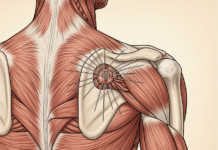Key Takeaways
- Daily stretching can reduce pain, improve flexibility, and decrease muscle tension.
- Simple routines tailored to morning, midday, and evening can seamlessly fit into any lifestyle.
- Targeted stretches help address specific areas of discomfort, offering relief from chronic aches and pains.
- Consistency, safety, and listening to your body are crucial for effective and sustainable stretching.
Table of Contents
- Understanding the Benefits of Stretching
- Morning Stretching Routine
- Midday Desk Stretches
- Evening Relaxation Stretches
- Stretching for Specific Pain Relief
- Incorporating Stretching into Daily Activities
- Safety Tips and Precautions
- Conclusion
Understanding the Benefits of Stretching
Suffering from muscle stiffness or discomfort is incredibly common, especially as our modern lifestyles often encourage long periods of inactivity, repetitive movements, or poor posture. However, adding regular stretching to your daily habits can make a significant, lasting difference. Research has shown that consistent stretching helps maintain flexibility, reduces the risk of injury by keeping joints and muscles limber, and increases blood flow to the muscles, which in turn helps alleviate discomfort and supports overall well-being.
Dedicated stretching can also support those coping with chronic aches and pains due to arthritis, back pain, or fibromyalgia. Incorporating stretches into your routine may help manage chronic aches and pains by improving circulation, loosening tight muscles, and promoting better posture. Gentle daily movements can reduce inflammation and stiffness, improving day-to-day function and potentially lowering the need for pain medication or frequent doctor visits. Stretching is not just reserved for athletes or fitness enthusiasts—it’s a powerful self-care practice for anyone seeking to move with less pain, more ease, and increased physical freedom. Perhaps most importantly, stretching helps you reconnect with your body, making it easier to notice when something feels off or needs attention.
Morning Stretching Routine
How you start your morning matters more than many people realize, as it sets the tone for the rest of the day. After waking up, a short series of stretches helps shake off overnight stiffness, gradually mobilizes the joints and muscles, and prepares your body and mind for the day ahead. You don’t need much time—even five minutes is enough to make a real impact. Performing gentle movements such as Child’s Pose, Cat-Cow, and Hip Flexor stretches targets essential muscle groups: the lower back, hips, and shoulders, which are areas most prone to tension buildup while sleeping. According to Healthline, engaging in active stretches first thing in the morning helps loosen up tight areas and boosts energy, improves circulation, and enhances mental focus throughout the day.
Sample Morning Routine
- Child’s Pose: Sit back on your heels, reach your arms forward, and hold for 20–30 seconds, breathing deeply into your back and shoulders. This gentle yoga posture helps lengthen and release tension from the spine and hips, creating a sense of grounding calm.
- Hip Flexor Stretch: Kneel on one knee, shift your weight forward, and feel the stretch in the front of your hip near the pelvis. Hold about 20 seconds on each side. This is particularly useful for people who spend much of the day sitting, as tight hip flexors are a common source of lower back discomfort.
- Cat-Cow Stretch: In a tabletop position on hands and knees, alternate arching your back towards the ceiling (cat) with dipping your spine towards the floor (cow) for 6–8 slow repetitions. This dynamic movement warms up the entire spine, bringing flexibility and helping to lubricate the vertebral joints.
Midday Desk Stretches
Long hours at a desk, whether in an office or home, can quickly lead to neck, shoulder, and back discomfort. Many people develop poor posture while working, hunching over computers or slumping in their chairs, which creates tightness and even persistent pain. Fortunately, incorporating a few simple desk stretches into your midday routine can counteract these effects and keep your body feeling fresh and energized. Stretches like neck tilts gently lengthen the muscles along the sides of your neck, while shoulder rolls release tension and restore circulation to tired upper back muscles. Seated spinal twists, which can be done right in your chair, gently mobilize the spine, relieving stiffness that accumulates over prolonged periods of sitting. The Mayo Clinic suggests desk-based stretches for office workers to avoid repetitive strain injuries and help maintain comfort through the workday.
Performing just a few of these stretches every couple of hours can prevent tension from accumulating and serve as a gentle reminder to check your posture and stay mindful of your body during work. Stand or sit taller, roll your shoulders back, and take several deep breaths as you stretch—these small actions help boost productivity and maintain comfort during even the busiest days.
Evening Relaxation Stretches
As the day winds down, gentle stretching can provide a natural transition from a busy, active schedule to a relaxed state. Stretches performed in the evening, such as Forward Fold, Supine Spinal Twist, and gentle hamstring stretches, help release tension accumulated from hours of activity or stress. These stretches don’t just feel good physically; they also help quiet the nervous system and promote a state of calmness that can ease symptoms of anxiety or mental unrest.
Many people find that dedicating 5–10 minutes to evening stretches can significantly improve sleep quality by relaxing both body and mind. The gentle forward bend of a Forward Fold lengthens the spine and releases the back, stretches the hamstring, loosens stiff legs, and twists like the Supine Spinal Twist to help relieve stubborn tension in the hips and lower back. Practicing these stretches before bed helps you fall asleep faster and supports better, more restorative sleep cycles, so you wake up feeling refreshed and less achy the next day.
Stretching for Specific Pain Relief
Certain types of pain—such as lower back discomfort, hip tightness, or shoulder tension—respond best to targeted stretching techniques. These targeted stretches are especially valuable for those who experience chronic or recurring pain arising from specific activities, work setups, or medical conditions. For example, the 90/90 Hip Stretch improves hip mobility and is especially helpful for those with sedentary lifestyles, as tight hips can cause postural and lower back issues.
Additionally, stretches like Reclined Figure Four and Thoracic Bridge zero in on commonly neglected areas. The Reclined Figure Four is ideal for loosening the deep gluteal and piriformis muscles, often implicated in sciatic pain. At the same time, the Thoracic Bridge mobilizes the upper back and chest, undoing the harmful effects of a slouched posture. Integrating these specialized movements into your weekly routine supports long-term joint health and comfort. For more expert-backed stretches and routines to relieve pain, NBC News features helpful advice for addressing persistent aches and common pain points that may impact daily life.
Incorporating Stretching into Daily Activities
The key to lasting results and noticeable pain relief is consistency. One highly effective strategy is to weave stretching into your daily activities and routines so it becomes a seamless, almost automatic part of your life. For instance, you can stretch while watching television, during work breaks, or during your bedtime wind-down. Stretching for even just a minute during these routine activities makes it easier to stay committed over the long term.
Small tricks, like setting calendar reminders or pairing stretches with established habits—such as after brushing your teeth or while waiting for your coffee to brew—help cement stretching as a regular part of your day. By using transition moments and idle minutes, you gradually build a habit that supports pain relief, flexibility, and general well-being without major schedule adjustments. Over time, these incremental efforts yield meaningful improvements, as your body becomes more resilient and less prone to stiffness or discomfort.
Safety Tips and Precautions
While stretching offers numerous benefits, it’s crucial to approach it with mindfulness and safety in mind. Always move slowly and deliberately, focusing on how each stretch feels in your body. Never force yourself into a position or bounce aggressively, as this can lead to injuries rather than preventing them. If you encounter sharp pain or discomfort, ease off and try a gentler modification of the stretch or rest completely.
People with existing medical conditions, recent injuries, or mobility limitations should consult a healthcare provider or qualified physical therapist before starting a new stretching program. This ensures that the stretches you choose are appropriate, beneficial, and won’t exacerbate any underlying issues. Safe stretching should always leave you feeling looser and more relaxed, not in pain or excessively sore after you’re done. Listening to your body’s feedback, progressing gently, and seeking professional advice when needed are all essential to a sustainable and effective stretching habit.
Conclusion
Adding stretching to your daily routine is a simple yet highly effective way to address pain, prevent injuries, and improve overall quality of life. Whether you struggle with muscle tightness from work-related sitting or seek relief from chronic aches and pains, regular stretching can help make everyday movements easier and more comfortable. A few minutes a day is enough to experience greater flexibility, enhanced ease of movement, and a stronger sense of well-being—benefits that can last for years.























